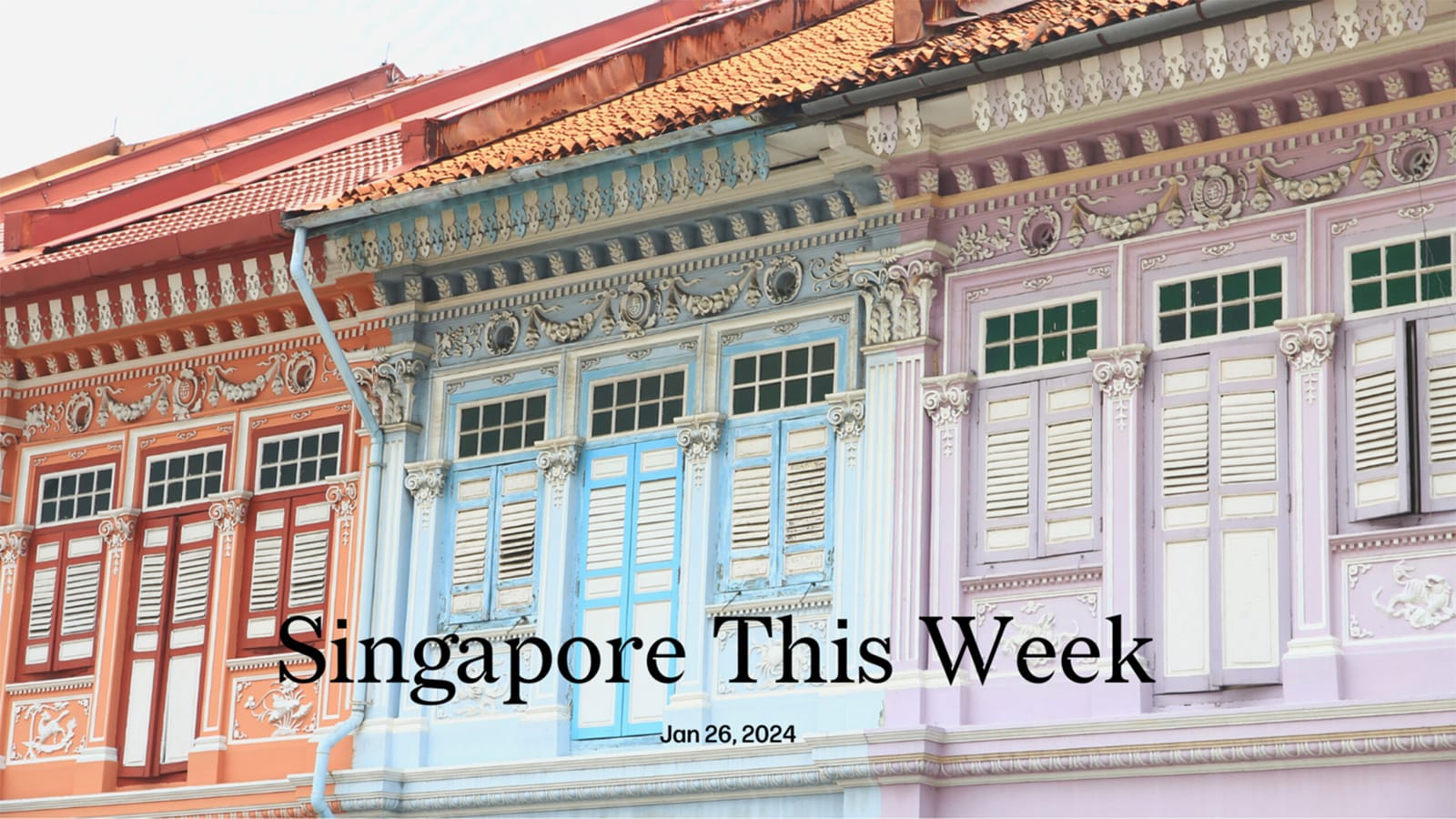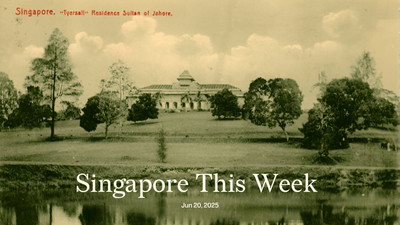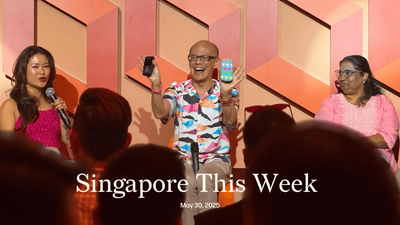Society: White supremacy in Singapore
“It is very good that there are yellow Frenchmen, black Frenchmen, brown Frenchmen. They prove that France is open to all races and that she has a universal mission,” said Charles De Gaulle, France’s first president, in 1959, as its Algerian colonial enterprise was ending. “But [it is good] on condition that they remain a small minority. Otherwise, France would no longer be France.” In 2012, these fears about France losing its White identity formed the basis of The Great Replacement, a book by philosopher Renaud Camus, whose central argument (and title) about ethnic dilution has become a rallying cry for White, Hindu, and other ethnic supremacists globally. And now, for a Chinese Singaporean too. The Internal Security Department (ISD) announced this week that in November last year it gave a restriction order to a 16-year-old who “...hoped to be recruited for violent attacks by white supremacist groups overseas to ‘fight for the whites’.” He was allegedly radicalised by American far-right rhetoric and developed an intense hatred for African Americans, Arabs, and LGBTQ+ (lesbian, gay, bisexual, transgender and queer) individuals. He had not planned to attack any of them here in Singapore but in countries where he perceived them to be a threat, such as France, Italy, the US and Russia. ISD also said that it had just released another youth, a Protestant Christian, who’d been detained in December 2020 after making plans to attack Muslims in mosques using a machete. After three years of “an intensive rehabilitation programme”, he appears to have been cured of his social pathologies. ISD warned, among other things, about views that advocate “for the superiority of specific communities, through the lens of cultural, ethno-religious or nationalist supremacy.” That the Singaporean system excels, a la “Minority Report”, in snuffing out crime before it occurs—neither of them even had a weapon—and then resetting the minds of these teenage extremists is both fascinating and Orwellian. It’s certainly worrying that there remains little to no public discussion about the philosophical roots of contemporary ethnic supremacy here, including Lee Kuan Yew’s beliefs. “I have said openly that if we were 100 percent Chinese, we would do better. But we are not and never will be, so we live with what we have,” he said in 1998, after over two decades of racist musings. These beliefs shaped policies, including the Graduate Mothers Scheme, and immigration preferences given to ethnic Chinese in order to maintain the group’s supermajority—manna from heaven for ethnic supremacists everywhere worried about a “great replacement”. Lee was not infallible, and, just like De Gaulle and Camus, deserves scrutiny for his problematic racial worldview hidden behind a veneer of state-ordained harmony.
Related: In “Why always LKY?”, Jom argues that by glossing over Lee’s words and enduring impact on society, as many in the establishment and outside are eager to do, we ignore the historicity of our moment, and we potentially attribute too much to other subsequent actors and circumstances.
Society: More informed teens, fewer pregnancies
Last month, we wrote about a Singaporean teenage tragedy: a 14-year-old boy and a 15-year-old girl fell pregnant, attempted and failed to abort the foetus on their own, and then buried their stillborn baby in a garden. It’s reassuring, then, that teen pregnancies in Singapore have declined from 487 in 2013 to 218 in 2022, thanks to the “more savvy” use of contraceptives, said local counsellors. This is welcome news, and social workers are among those celebrating—“teens are not ready to have children,” they said. Social stigma, financial stress and a lack of preparedness aside, complications related to pregnancy and childbirth are the leading cause of death for girls aged 15 to 19, according to the World Health Organisation. Compared to older women, young mothers are more vulnerable to pelvic inflammatory disease, maternal anaemia, infections, pre-clampsia, fistulas (where the wall of the bladder or rectum and the vagina tears, leading to painful sores) and post-partum depression, among other potential medical issues. “The complications, the morbidity and the mortality [related to pregnancy] are much higher in girls under 15 than girls 16 to 19, although 16 to 19 has a mortality twice as high as women 20 and above,” Dr Ashok Dyalchand told The New York Times. Local counsellors caution against interpreting the decline in numbers to mean fewer teenagers are having sex. There still remains a “need to strengthen reproductive and sexual health education in schools so that teens are well-informed about the consequences of getting pregnant, the legal framework surrounding sexual activity and safe methods for handling unplanned pregnancies,” a spokeswoman from Babes Pregnancy Crisis Support, an organisation which assists pregnant teens, told The Straits Times. Ultimately, guaranteeing complete and total abstinence for all teens is simply not possible. Singapore needs to keep improving sex education and promoting open, non-judgemental conversations on the issue, so that one day young adults can make fully informed decisions about their reproductive future.
Society: SimplyGo-stan
Having just replaced the disgraced S Iswaran as transport minister, Chee Hong Tat’s first big public act was to announce that commuters won’t be forced to switch to the new SimplyGo payment platform from June, as earlier planned. “I apologise on behalf of MOT [the Ministry of Transport] and LTA [Land Transport Authority] for the delays commuters experienced when they tried to convert their existing EZ-Link cards. This could have been avoided with better preparation,” he also said. The gostan has been framed by Chee and other politicians from the ruling People’s Action Party as proof of how seriously it considers public feedback. The government will now spend S$40m—about S$8 for every person living here—to ensure that the system continues to work the way it has. There’s no such thing as a free gostan.
Society: Brotherhood of sweat
Let’s face it. Singaporean women are generally better groomed and turned out than their male counterparts. Just look around. Our men’s sense of style, or rather the apparent lack of it, has been roundly criticised as being sloppy, boring and predictable. Blame it on the weather, as some men have retorted in defence of their standard ensemble of t-shirt, shorts and flip-flops. But not just any kind of t-shirt, mind you. The Uniqlo AIRism oversized tee has found its way into many a local male’s wardrobe. So much so that even the Japanese retailer took a playful jab, in 2022, when it dubbed the popular item “The SG Uniform” in an advertisement. Practicality or laziness? In an op-ed for CNA, writer Frederick Lim, who confessed to owning six pieces himself, argued for the former, noting that the “highly breathable and quick-drying” fabric makes for “an ideal choice” in Singapore’s tropical heat and humidity. Sweat, it seems, is the glue that binds many men’s fashion choices here. Seriously, though, one might earnestly ask: why the lack of imagination? Could it be due to a crisis of confidence, buoyed by a fear of appearing flamboyant, and hence not masculine enough? And could this perhaps boil down to an issue of sexuality? Playwright Joel Tan and educator Kishan Singh, two queer best friends, analysed the straight male psyche in an episode of their no-holds-barred podcast “T42”. In the tongue-in-cheek critique, Tan asked: “Would you say there’s a specific flavour for straight men in Singapore?” To which Singh replied, “Bland. I don’t think got flavour.” Tan’s eventual response, “It’s not so much that straight men are bland. As it is that they are…there’s this kind of very sian, uninspired energy about them.” To dress outside of the accepted silhouette and colour way might be beyond the pale for many men. Why stand out when you can blend in? But in this era of dating apps and falling birth rates, perhaps, boys (to men), it’s time to escape that stuffy closet and flambé your clothing limitations.
History weekly by Faris Joraimi
How low can academia go?
In academic debates, facts aren’t the only things at stake. Early this week, Serge Jardin, a Frenchman and independent researcher living in Malaysia, ripped apart a recently published article by two scholars from Universiti Putra Malaysia (UPM) that contained multiple factual errors. In a Facebook post, entitled “HOW LOW CAN ACADEMIA GO!”, Jardin made evidence-based corrections to the article “The Jongs and The Galleys: Traditional Ships of The Past Malay Maritime Civilization” by Rozita Che Rodi and Hashim Musa. It garnered over a thousand reactions. Probably realising that chatter over the shoddy paper was getting too loud to ignore, UPM defended the two academics, saying that the paper was subject to blind peer-review and rigorous academic standards. But many online were not persuaded; the International Journal of Academic Research in Business and Social Sciences, where the article was published, is not a reputable journal in Malay studies (of which there are a handful), let alone the humanities. Perhaps this episode reflects a more systemic problem in Malaysian academia. “It’s high time that something is done about the standards of higher education in Malaysia,” said Syed Farid Alatas, a Singapore-based Malaysian sociologist, noting the defensive posture of Malaysian scholars in response to the issue. Questionable research standards are not endemic to Malaysian academia. Western academia is no different; allegations surfaced last year that a China historian at Yale had “systematically” misrepresented and mistranslated sources. But this particular incident intersects with Malaysian identity politics. Jardin’s posts are often about correcting Malaysia’s official accounts of the past. All well-argued, even if—pardon me monsieur—it’s yet another European scholar-gentleman teaching us the “facts”. A glance at his comments sections shows a predominantly English-speaking, non-Malay following. At a time when the conservative Malay constituency is mobilising history to make claims about race-based rights and privileges, it’s easy to see why a narrative has developed that different standards are applied to a work of history just because Malays wrote it. I don’t think that’s true, in this case.
Heritage trades
Once, while I was walking by a picturesque row of shophouses in Joo Chiat with two friends, an elderly Chinese Peranakan lady standing in one of the courtyards noticed us admiring the architecture. The façades had been freshly-repainted, probably for the Instagram hordes. She struck up a conversation, in the upper-class Malayan English of the last century: “I was born in 1940.” A life story ensued. We forgot about the architecture. It’s easy to overlook how much of this city still lives and remembers. Last week, Joo Chiat joined four other historical areas in Singapore (Balestier, Chinatown, Kampong Gelam and Little India) whose long-established businesses now have “mini-museums”—in the form of a small display—showcasing their origin stories, accompanied by antique documents and objects from the owners’ private collections. The National Heritage Board (NHB) scheme, called Street Corner Heritage Galleries, involves collaboration with these businesses to highlight Singapore’s living historical trades that continue to serve patrons today. Joo Chiat’s six participating businesses are all food establishments: a noodle house, a popiah maker, a bakery, a gourmet restaurant, a bak kut teh shop, and a bespoke Chinese Peranakan boutique which still sells the signature kueh chang it was initially known for. I like that “heritage” can also mean things that are still around; we shouldn’t have to wait until they’re gone before we get curious about them. It’s also a better framework than the “vanishing trades” approach that prevailed in the 1990s, which led to a series of oral interviews for the National Archives as well as a publication. The idea of “vanishing trades” confirms their disappearance as an inevitability. The official body that manages Penang’s heritage sites, George Town World Heritage Incorporated, conducts walking tours of the UNESCO-recognised city’s “traditional trades”, and published a book documenting them as a living legacy. The NHB’s Street Corner Heritage Galleries, showing how the past still has value in the present, feels like a step in this direction. Tradition, upheld through conscious, daily work, does not simply vanish.
Arts: New writing in the spotlight
It can be difficult for emerging Singaporean playwrights to find the spotlight in a tiny industry where companies frequently work with the same artists, and where social capital and “the strength of weak ties” are major factors in landing jobs and opportunities. These in-group dynamics are frustrating but understandable—it’s a gamble for any company to stake their box office on an unfamiliar name, especially in a country where arts audiences have not been consistently cultivated. Open auditions are one effective but high-pressure way for new actors to show off their chops; when it comes to new writing, more Singaporean theatre companies are widening the windows of opportunity for playwrights. Wild Rice has put out a rare call for unsolicited script submissions, where Singapore-based writers can submit brand-new full-length plays for the popular theatre company’s consideration. Joel Tan leads this process as Wild Rice’s new literary manager, an appointment that follows a whole suite of new writing development programmes he helped to set up at theatre non-profit Centre 42. There, Tan and the team observed the gulf that exists between script development and presentation platforms, that many processes focus on getting a script ready in the short-term rather than getting a writer in shape for the long run, and that a lot more advocacy work can be done when it comes to connecting emerging writers with presenters and producers. Centre 42 continues to offer a slew of script- and writer-focused programmes, including their New Scripts Garage, building muscle around the textual backbone of the theatre. They’re not the only companies that have committed to the marathon of discovering and honing new writers and writing. The Necessary Stage and Checkpoint Theatre regularly host playwriting mentorships and masterclasses, and T:>Works has been running the 24-Hour Playwriting Competition and staging its winning scripts since 1996. The annual event has been held everywhere from the Institute of Mental Health to the members-only Figment Club House. Participants tend to make a pyjama party of the endurance competition, with mandatory writing prompts unveiled through the night and into the wee hours of the morning. On February 3rd, some of the winning pieces from last year will get a dramatised reading before they’re flagged off for the next stage of development. The discipline of developmental work isn’t sexy: favourite lines get cut, characters change shape, plot holes are excavated before they’re filled. But it’s very much the offstage effort that rewards artists and audiences with onstage ease.
Tech: Making the green leap with technology
From bitcoin mining to excessive uploads of family photographs to the cloud, our digital life is having an ever larger carbon impact on the planet. If left unchecked, the information and communication technology (ICT) sector could constitute 14 percent of global emissions by 2040, according to World Bank estimates. Against that global backdrop, Singapore’s commitment to environmental sustainability has taken a technological leap forward—the Infocomm Media Development Authority (IMDA) has allocated S$30m to the Green Computing Funding Initiative (GCFI). This initiative aims to enhance energy efficiency in computing infrastructure and software, tapping into the expertise of academicians and industry innovators to tackle challenges unaddressed by commercial endeavours. The GCFI aligns with the Singapore Green Plan 2030 and the country’s goal to achieve net-zero emissions by 2050, specifically targeting the ICT sector’s contribution to carbon emissions. IMDA’s push for green computing is not isolated. Trials spearheaded by IMDA involving industry giants like Amazon Web Services, Ant Group, and local institutions aim to refine the development of green software, reduce energy consumption, and establish best practice industry guidelines. Concurrently, GovTech’s focus on consolidating government data centres and migrating systems to the cloud are pivotal to Singapore’s broader green efforts. This agenda complements ongoing sustainability narratives in the region, such as SGP Foods’ advocacy for sustainability and carbon crediting within food production, showcasing technology’s role in agriculture and environmental health. Together, these measures emphasise Singapore’s approach to embedding sustainability into its economic and technological development plans, harnessing green computing as a vital tool in combating climate change.
Tech: Bringing online parenting offline
The Parentinc, which operates digital parenting platforms including theAsianparent across South-east Asia, announced its acquisition of Motherswork, a premium retailer for mum and baby products with flagship stores in China and Singapore. The acquisition brings together the company’s strong online communities and offline retail presence, which is critical for fully serving parents and realising the company’s omnichannel vision. Given that South-east Asia’s e-commerce penetration rate is about 20 percent, going offline allows The Parentinc to reach the 80 percent of consumers who still primarily shop in physical stores, expanding its total addressable market. The partnership also provides valuable purchasing behaviour data to further optimise product offerings. The deal mirrors other Asian parenting brands going omnichannel for long-term growth, like Mamaearth’s oversubscribed initial public offering (IPO) in India following a strong push into offline retail. With a combined community of over 30m parents across key South-east Asian markets, this acquisition positions The Parentinc to scale rapidly through both owned stores and retailer partnerships regionally. As the group nears S$40m in revenue, this transition demonstrates The Parentinc’s strategic focus on serving the full customer journey to sustain its trajectory towards a potential IPO.
If you enjoy Jom’s work, do get a paid subscription today to support independent journalism in Singapore.








